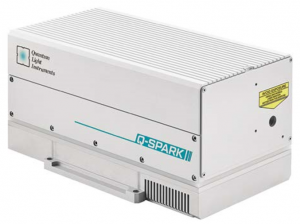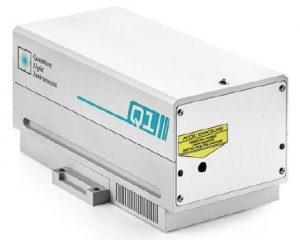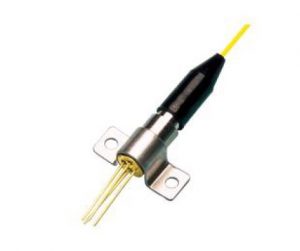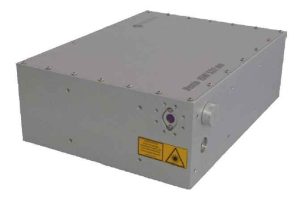Learn More About 532nm Lasers
Diode-Pumped Solid-State (DPSS) 532nm Lasers are by far the most common green laser available on the market today. These 532 nm lasers are typically made by frequency doubling the fundamental wavelength output (e.g., 1064 nm) of a solid-state material (active medium) such as Nd:YAG (neodymium-doped yttrium aluminum garnet), Nd:YVO4 (neodymium-doped yttrium orthovanadate), or Nd: Glass. The laser light is generated by pumping the active medium with a diode laser or flashlamp, which causes the atoms in the medium to release photons at the desired wavelength.
It’s worth noting that the output power, beam quality and other parameters of the laser vary depending on the specific design and manufacturer.
Green laser wavelengths provide more energy than their infrared counterparts, considering the same power output. This is because the shorter the wavelength, the higher the frequency or number of waves per second that pass through a point in space. Higher frequency equals higher energy.
Green lasers are used in various applications, such as fluorescence spectroscopy, optical alignment, dermatology, pumping of Ti:Sapphire lasers. Since many optics suppliers sell 532 nm radiation-dedicated optics right off-the-shelf, it is cost effective to use this particular wavelength for optics alignment, projections, imaging, etc. Many of those applications require laser source having good beam quality and high power stability.
Our Products
DPSS 532 nm lasers are available with both pulsed and continuous wave (CW) configurations. Our Pulsed 532nm Laser options include Pulsed DPSS Lasers, Ultrafast Lasers, Microchip Lasers, MIL-Spec Lasers (Military Lasers), and Micromachining Laser Systems, and are available in a wide range of pulse widths including femtosecond, picosecond, and nanosecond.
Our 532 nm CW Laser Module options include CW DPSS Lasers, Single Emitter Laser Diodes, and Raman Probes, and are available in a range of output powers in either an OEM or plug and play versions.
Our knowledgeable, technical staff’s main goal is to provide our customers with the best laser for their application. If we do not offer it, we will tell you who does.
Our Experience
For over 25 years RPMC Lasers has been providing 532 nm lasers to various researchers and OEM integrators in the Defense, Medical, Industrial, and Life Science markets. We have fielded 1000s of units, from standard, off the shelf products to fully customized lasers for many applications, including bathymetry, flow cytometry, interferometry, and more! We work closely with industry-leading laser manufacturers to provide a wide range of 532 nm laser products to meet a variety of customer specific application requirements.
Deeper Dive into 532nm Lasers
Some 532 nm Laser Applications
Bathymetry
As in most LIDAR systems designed for distance measurement, bathymetric LIDAR relies on time-of-flight determination for calculating the distance to the target. In traditional LIDAR, the range (R) to the target is then determined using the following equation, R = C × Δt/2, where C is the speed of light. In bathymetry though, you need to measure both the distance to the surface of the water and the floor and take the difference between the two.
Because of the absorption spectrum of liquid water, 1064 nm and 532 nm lasers are typically used as the two transmission wavelengths for this application. In this process, the 1064nm laser is first used to establish the reference level for the surface of the body of water, using standard TOF processing. Once this reference level is determined, the system will then look at the TOF for the green laser minus the TOF for the 1064 nm laser pulse, to calculate the total depth.
Read more about bathymetry and ideal laser solutions:
Flow Cytometry
Flow cytometry is a method for simultaneously analyzing multiple physical properties of an individual cell as it flows through a beam of light in a fluid stream, including the cells size and fluorescence.
There are many different flow cytometry based applications. With multiple wavelengths at your disposal, and beam combining modules allowing diverse wavelength combinations, all of these applications are made more accessible.
Just as in traditional particle counting, flow cytometry lasers must exhibit excellent pointing and power stability, and single-mode, low noise operation (typically free-space output). However, unlike conventional particle counting systems, the wavelengths must be chosen to match the excitation spectra of the available fluorophores. Typical wavelengths include 355nm, 405nm, 473nm, 488nm, 532nm, 553nm, 561nm, 594nm, 640nm and NIR, with output powers in the 25-500mW range.
Read the full article here.
Printed Circuit Board (PCB) Processing
With our robust systems, you will be able to successfully tackle any PCB processing challenge, from cutting to marking, utilizing the same laser source. Whether needing selective material removal (e.g. solder resist film on copper, or gold on alumina), track interruption (short-circuit), in-situ micro-corrections of connection errors, component termination & separation, or barcode & data matrix marking, we have the right solution for you. These solutions include a range of compact, air-cooled DPSS lasers with high-energy ns and sub-ns pulses.
Read the full article here.
Raman Spectroscopy
Raman Spectroscopy has become increasingly popular in recent years. With more demand for this application, some companies have strived to make advancements to the associated technology and hardware, in an effort to provide better results, more throughput, increased flexibility, and a reduction in total footprint of these devices.
Our new, advanced, and versatile Raman probe provides some key features and improvements, designed to get you even better, faster results for any Raman Spectroscopy application. The most exciting, unique feature of this Raman probe is the dual-wavelength concatenation capability. There are other, standard configurations already on the market that offer two wavelengths (say 532 & 785nm dual-band). However, these devices require two separate spectrometers. Basically, they are just switching between the two bands, utilizing each wavelength for different samples with unique fluorescent characteristics. Now, this new design allows you to interrogate the whole band (fingerprint and stretch region) with a single spectrometer. No more switching.
Read the full article here.
Micromachining
Compared with near-infrared lasers, 532nm lasers (green lasers) provide a number of benefits, namely a higher absorption coefficient in copper, gold, or silicon, for example. This allows you to operate the laser at less overall power, while simultaneously getting better quality results in your laser material processing. While the cost may be higher than that of a 1064 nm laser, for example, the benefits are worth the higher price point if quality is a concern.
See our Micromachining Laser page here with supporting blogs.
How Can We Help?
With over 25 years experience providing 532 nm lasers to various researchers and OEM integrators working in various markets and applications, and 1000s of units fielded, we have the experience to ensure you get the right product for the application. Working with RPMC ensures you are getting trusted advice from our knowledgeable and technical staff on a wide range of laser products. RPMC and our manufacturers are willing and able to provide custom solutions for your unique application.
If you have any questions, or if you would like some assistance please Contact Us here. Furthermore, you can email us at info@rpmclasers.com to talk to a knowledgeable Product Manager.
Alternatively, use the filters on this page to assist in narrowing down the selection of 532nm lasers for sale. Finally, head to our Knowledge Center with our Lasers 101 page and Blogs, Whitepapers, and FAQ pages for further, in-depth reading.
Finally, check out our Limited Supply – In Stock – Buy Now page: This page contains an ever-changing assortment of various types of new lasers at marked-down/discount prices.
Additional Resources
Blogs:

 SHIPS TODAY
SHIPS TODAY 
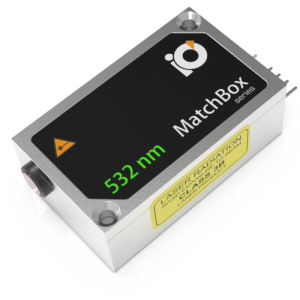

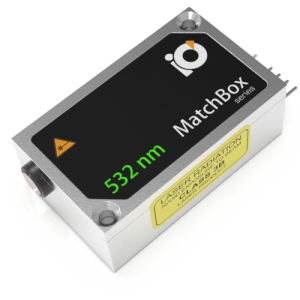
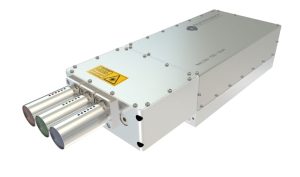
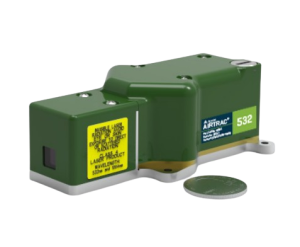
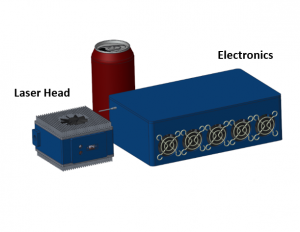
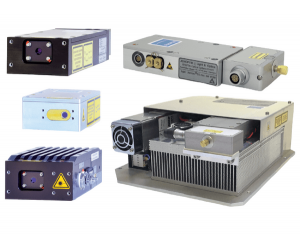
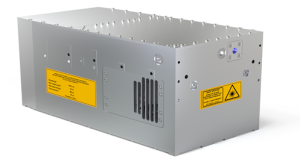
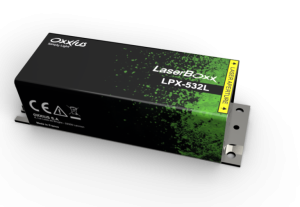
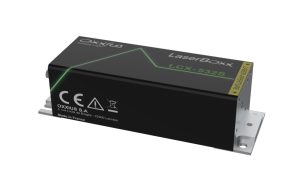
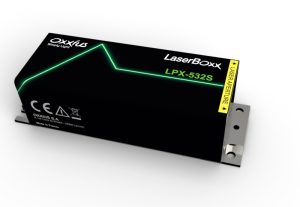
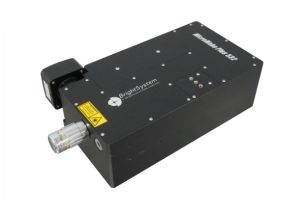
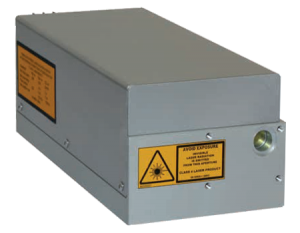
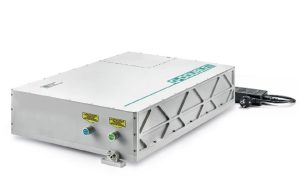
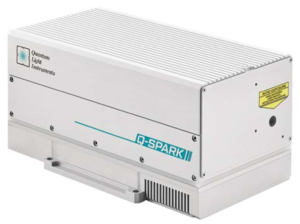
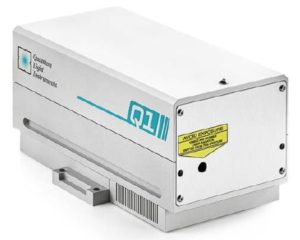


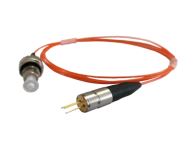
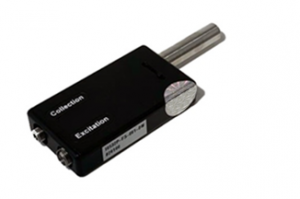
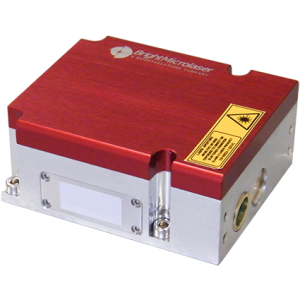


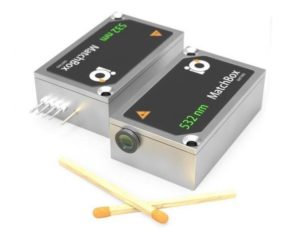
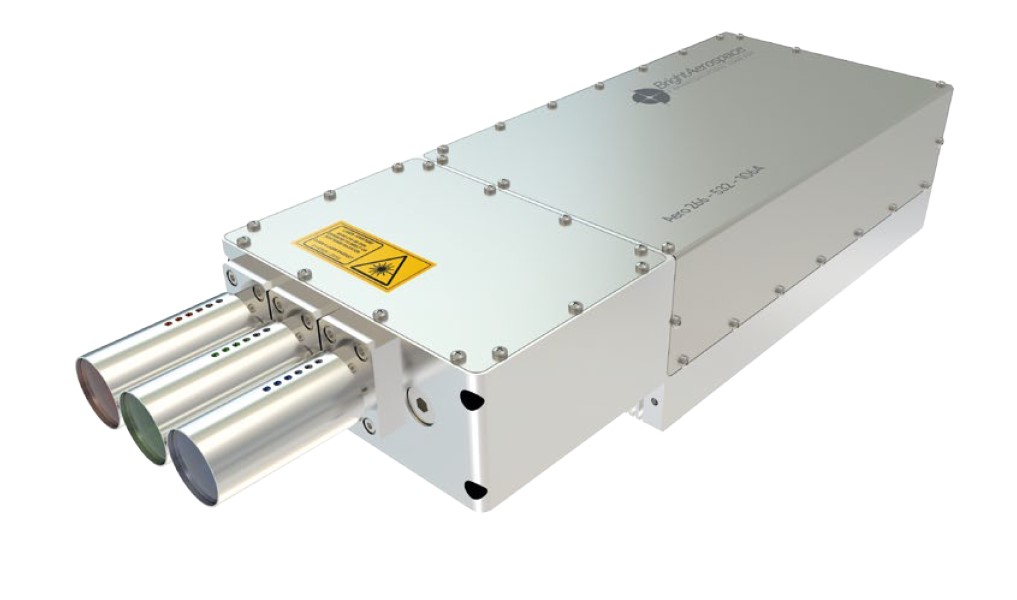 The Aero Series is a high-energy, nanosecond pulsed DPSS laser, available at 266, 355, 532, and 1064nm, with up to 10W output power at 1064 (up to 200 mJ with water-cooling). This series provides unparalleled precision and accuracy in even the most challenging environments, ideal for LIBS, spectroscopy, and atmospheric LIDAR applications. All models come enclosed in an air-cooled, extremely compact and ruggedized, thermo-mechanically stable, low SWaP single unit platform, with options for air- or water-cooling, a range of add-ons, and even complete customization to fit your exact needs. Upon request, customized models undergo severe vibration and qualification tests for operation in space.
The Aero Series is a high-energy, nanosecond pulsed DPSS laser, available at 266, 355, 532, and 1064nm, with up to 10W output power at 1064 (up to 200 mJ with water-cooling). This series provides unparalleled precision and accuracy in even the most challenging environments, ideal for LIBS, spectroscopy, and atmospheric LIDAR applications. All models come enclosed in an air-cooled, extremely compact and ruggedized, thermo-mechanically stable, low SWaP single unit platform, with options for air- or water-cooling, a range of add-ons, and even complete customization to fit your exact needs. Upon request, customized models undergo severe vibration and qualification tests for operation in space.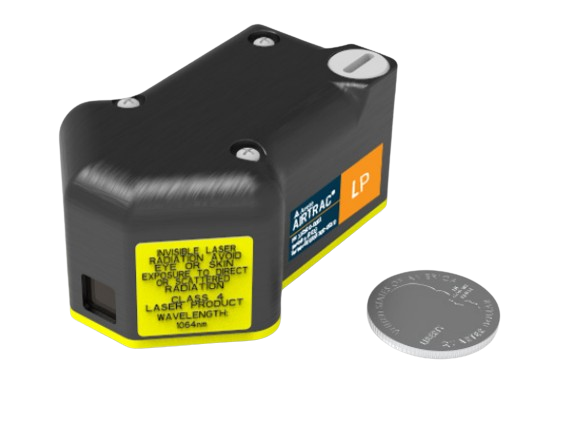
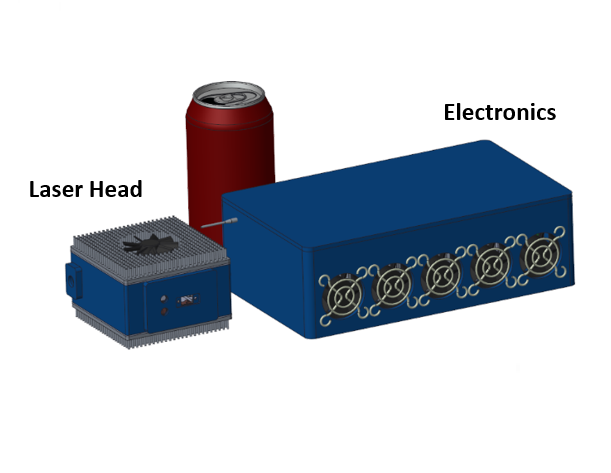 The CEUV series is a commercial line of compact and efficient DPSS laser sources, capable of operating over a wide range of pulsing conditions (duty-cycle and PRF), in a low SWaP package, with average power up to ≈5W @ 266nm, 10W @ 355nm or 532nm, 20W @ 1064nm. This series of DPSS lasers provides a combination of compact, efficient, and high-power performance in a rugged design suitable for harsh environments and airborne applications. The design has been tested in brassboard hardware and a prototype is being developed.
The CEUV series is a commercial line of compact and efficient DPSS laser sources, capable of operating over a wide range of pulsing conditions (duty-cycle and PRF), in a low SWaP package, with average power up to ≈5W @ 266nm, 10W @ 355nm or 532nm, 20W @ 1064nm. This series of DPSS lasers provides a combination of compact, efficient, and high-power performance in a rugged design suitable for harsh environments and airborne applications. The design has been tested in brassboard hardware and a prototype is being developed.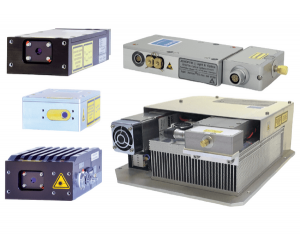
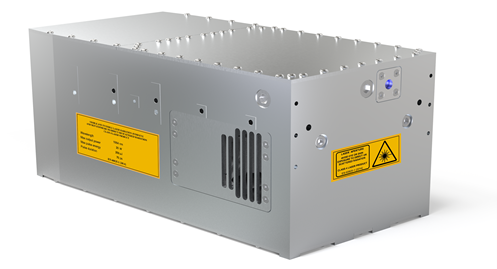 The Lampo Series is a line of compact ultrafast lasers that deliver megawatt-level ps laser pulses at a selectable PRR from 50 kHz to 40 MHz. Available in IR (1064 nm), SHG (532 nm), and Deep-UV (266 nm) versions (355nm by request), the series offers pulse durations < 70 ps and average power up to 20W, 10W, and 1.5W respectively. With pulse energy up to 250uJ, 150uJ, and 30uJ, these lasers are ideal for a wide range of scientific, industrial, defense, medical, biological, and LIDAR applications. Built into a rugged, air-cooled single-unit laser head, these lasers are easy to operate and integrate, making them a valuable tool for sophisticated laser systems and lab applications.
The Lampo Series is a line of compact ultrafast lasers that deliver megawatt-level ps laser pulses at a selectable PRR from 50 kHz to 40 MHz. Available in IR (1064 nm), SHG (532 nm), and Deep-UV (266 nm) versions (355nm by request), the series offers pulse durations < 70 ps and average power up to 20W, 10W, and 1.5W respectively. With pulse energy up to 250uJ, 150uJ, and 30uJ, these lasers are ideal for a wide range of scientific, industrial, defense, medical, biological, and LIDAR applications. Built into a rugged, air-cooled single-unit laser head, these lasers are easy to operate and integrate, making them a valuable tool for sophisticated laser systems and lab applications.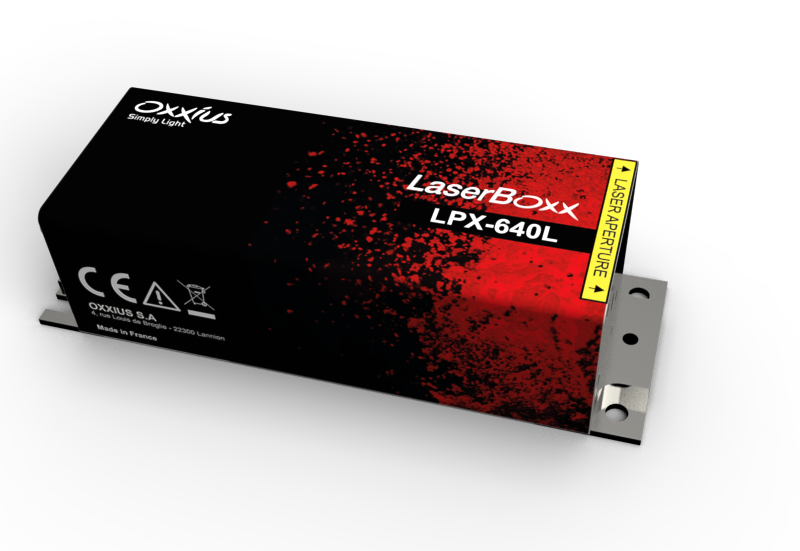
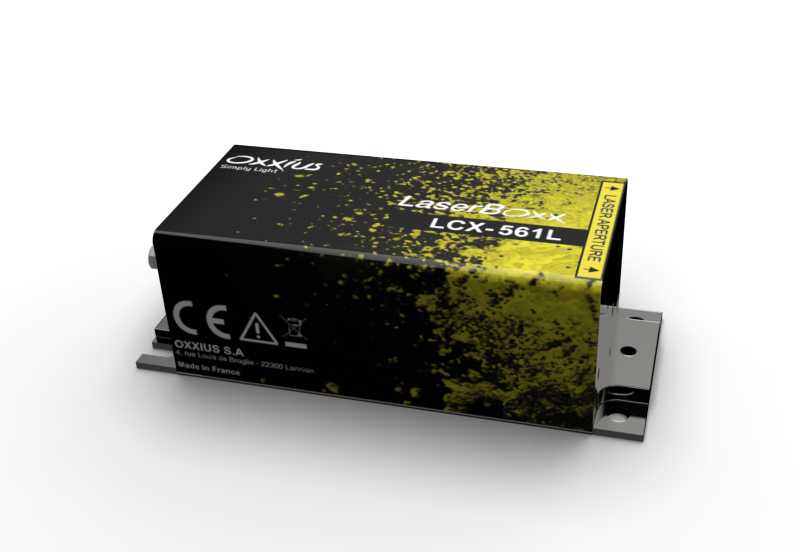
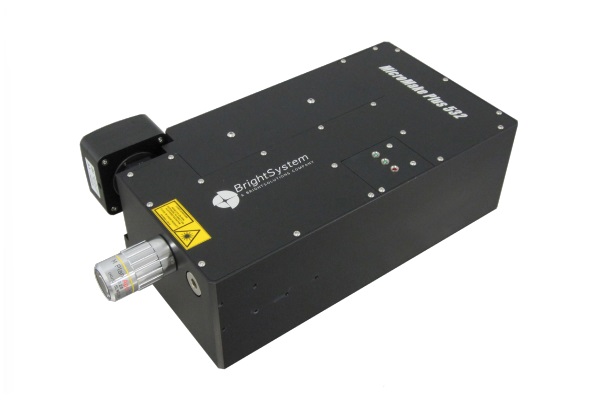 The MicroMake Series is a fully-integrated, compact, sub-ns DPSS laser micromachining system for high precision and resolution applications. A flexible platform at 532 & 266 nm, with >40 kW of peak power and processing speeds up to 100mm/second, the system includes all the needed devices for direct laser micro-processing in a single, monolithic, air-cooled configuration. Equipped with a live microscope, alignments and in-process quality checks are a breeze. All these features perfectly suit various materials utilized in microelectronic circuits, displays fabrication and correction, biomedical device machining and optical substrates microprocessing.
The MicroMake Series is a fully-integrated, compact, sub-ns DPSS laser micromachining system for high precision and resolution applications. A flexible platform at 532 & 266 nm, with >40 kW of peak power and processing speeds up to 100mm/second, the system includes all the needed devices for direct laser micro-processing in a single, monolithic, air-cooled configuration. Equipped with a live microscope, alignments and in-process quality checks are a breeze. All these features perfectly suit various materials utilized in microelectronic circuits, displays fabrication and correction, biomedical device machining and optical substrates microprocessing.
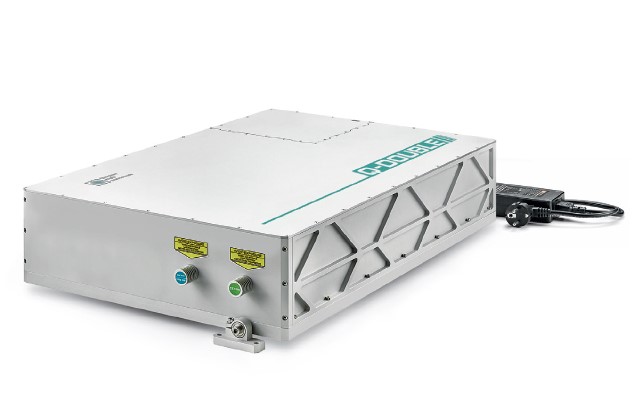 The Q-DOUBLE series is a DPSS, air-cooled, q-switched laser at 1064 or 1053 nm, designed to produce two pulses with variable temporal separation for PIV, LIBS, and other applications. The Q-DOUBLE can be configured for up to 160 mJ pulse energy @ 10 Hz or up to 40 mJ @ 100 Hz. The innovative laser design integrates all electronics (except power adapter) into the housing, resulting in a compact, user-friendly, turnkey, and air-cooled (water-free) system requiring little maintenance. User-friendly web-based GUI allows remote monitoring, control, and support from any computer or even a smartphone. Optional add-ons include built-in 2nd, 3rd, or 4th harmonic generator, built-in attenuator, energy monitor, and optional short cavity version.
The Q-DOUBLE series is a DPSS, air-cooled, q-switched laser at 1064 or 1053 nm, designed to produce two pulses with variable temporal separation for PIV, LIBS, and other applications. The Q-DOUBLE can be configured for up to 160 mJ pulse energy @ 10 Hz or up to 40 mJ @ 100 Hz. The innovative laser design integrates all electronics (except power adapter) into the housing, resulting in a compact, user-friendly, turnkey, and air-cooled (water-free) system requiring little maintenance. User-friendly web-based GUI allows remote monitoring, control, and support from any computer or even a smartphone. Optional add-ons include built-in 2nd, 3rd, or 4th harmonic generator, built-in attenuator, energy monitor, and optional short cavity version.